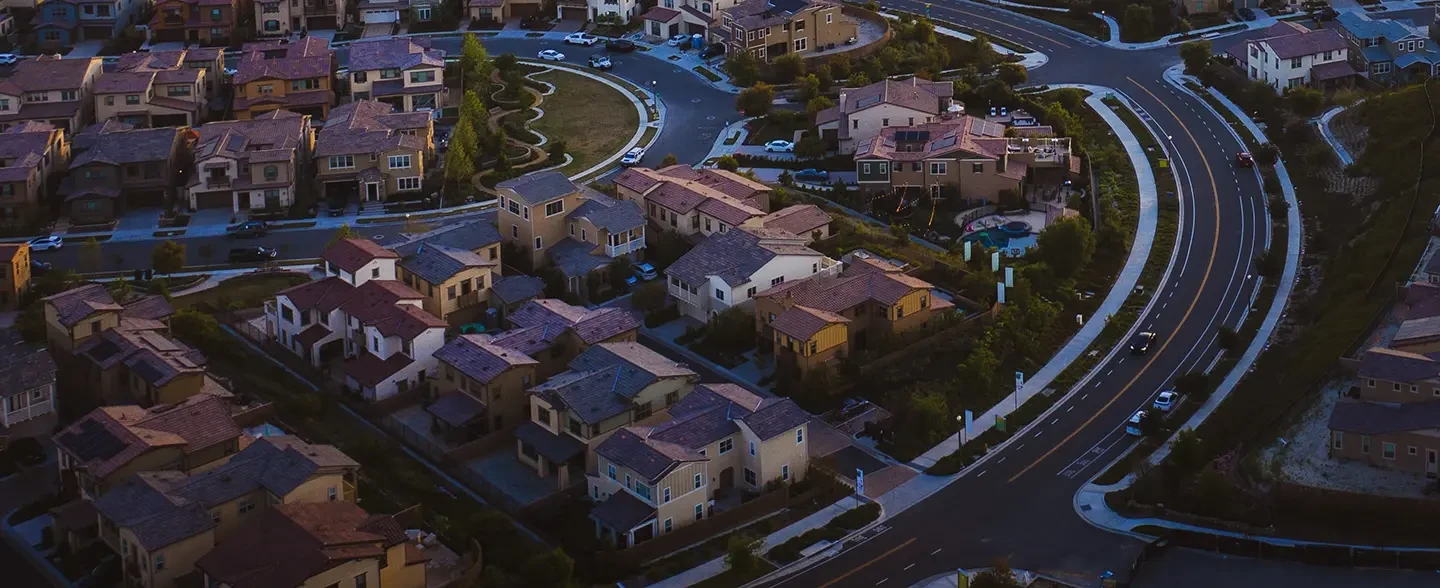Navigating the complexities of maintenance responsibilities within California Homeowners Associations (HOAs) is crucial for both homeowners and board members. Misunderstandings can lead to disputes, financial burdens, and legal challenges. Central to this understanding is the Davis-Stirling Common Interest Development Act, which provides the legal framework governing HOAs in California.
It’s essential to understand the delineation of maintenance duties, the roles, and responsibilities to prevent conflicts and HOA disputes and ensure the well-being of the community.
Understanding California HOA Maintenance Responsibilities
The Role of HOAs in Property Maintenance
Homeowners Associations (HOAs) play a pivotal role in preserving the aesthetic appeal, functionality, and value of communities. Their responsibilities typically encompass the maintenance, repair, and replacement of common areas, ensuring that shared spaces remain safe and enjoyable for all residents. This includes tasks like landscaping, upkeep of recreational facilities, and maintenance of shared infrastructure such as roads and sidewalks.
Importance of Clear Delineation of Maintenance Duties
Clear definitions of maintenance responsibilities are essential to prevent disputes between HOAs and homeowners. Ambiguities can lead to disagreements over repair obligations, financial liabilities and can strain community relations.
The Davis-Stirling Act emphasizes the significance of well-defined Covenants, Conditions, and Restrictions (CC&Rs), which serve as the governing documents outlining the specific duties of both the HOA and individual homeowners.
Common Area Maintenance
Definition of Common Areas
Common areas refer to parts of the property collectively owned and used by all members of the HOA. These typically include amenities such as parks, swimming pools, clubhouses, gyms, hallways, elevators, sidewalks, and private roads. The maintenance of these areas is generally the responsibility of the HOA, ensuring they are safe, clean, and functional for all residents.
Typical HOA Responsibilities
Regular Inspections: Conducting periodic checks to identify and address maintenance issues promptly.
Cleaning and Upkeep: Ensuring cleanliness of shared spaces to maintain hygiene and aesthetic standards.
Landscaping: Maintaining lawns, gardens, and other green spaces to enhance community appeal.
Infrastructure Maintenance: Repairing and maintaining shared structures like roads, sidewalks, and parking areas.
Utility Management: Overseeing the proper functioning of shared utilities, including lighting, water systems, and sewage.
Examples of Shared Systems and Exterior Features
Shared systems and exterior features under HOA maintenance often encompass:
Elevators: Ensuring operational safety and compliance with regulations.
Roofs: Maintaining the integrity of roofing systems in multi-unit buildings.
Shared Plumbing Systems: Overseeing the functionality of plumbing that serves multiple units.
Homeowner Responsibilities
Limited Common Elements
Limited common elements are areas designated for the exclusive use of one or more units, but are still considered part of the common areas. Examples include balconies, patios, and assigned parking spaces. Responsibility for these areas can vary; while the HOA may handle structural maintenance, homeowners are often tasked with routine upkeep.
Interior Maintenance Obligations
Homeowners are typically responsible for the maintenance and repair of their individual units. This includes:
Fixtures and Appliances: Ensuring all interior installations are functional.
Interior Surfaces: Maintaining walls, floors, and ceilings.
Personal Property: Caring for belongings within the unit.
Regular maintenance helps prevent issues that could affect neighboring units or common areas.
Insurance Requirements
Homeowners are advised to carry individual insurance policies covering:
Interior Improvements: Protecting against damage to fixtures and finishes.
Personal Property: Safeguarding belongings within the unit.
Liability: Covering potential liabilities arising from incidents within the unit.
While the HOA may have a master insurance policy for common areas, individual policies ensure comprehensive coverage for homeowners.
Delineation Of Repair Responsibilities
Plumbing Systems and Structural Components
Determining responsibility for plumbing and structural components depends on their location and function:
Shared Systems: The HOA typically manages maintenance and repairs of plumbing systems serving multiple units.
Individual Unit Systems: Homeowners are responsible for plumbing exclusively serving their unit.
Guidelines for Determining Responsibility
To ascertain maintenance responsibilities:
Review CC&Rs: These documents outline specific obligations of the HOA and homeowners.
Consult the Davis-Stirling Act: Provides statutory guidance on maintenance duties.
Seek Legal Counsel: In complex cases, consulting a California HOA lawyer can provide clarity and prevent disputes and violation notices.
Key Factors in Responsibility Disputes
Disputes often arise due to:
Location of Damage: Determining whether the issue is within a unit or a common area.
Cause of Damage: Assessing if damage resulted from normal wear and tear or negligence.
Understanding these factors is essential in resolving HOA vs. homeowner maintenance disagreements.
Consequences Of Neglect
Impact on Property Value and Safety
Neglecting maintenance responsibilities can have significant repercussions:
Decline in Property Values: Poorly maintained common areas can diminish the overall appeal of the community, leading to decreased property values.
Safety Hazards: Unaddressed maintenance issues, such as faulty electrical systems or deteriorating structures, can pose serious safety risks to residents.
Potential Legal Recourse and Mediation Options
When an HOA fails to fulfill its maintenance obligations:
Legal Action: Homeowners may pursue legal remedies to compel the HOA to perform necessary maintenance, especially if the neglect violates the Covenants, Conditions, and Restrictions (CC&Rs) or the Davis-Stirling Act.
Mediation: Before resorting to litigation, homeowners are encouraged to engage in Alternative Dispute Resolution (ADR) methods, such as mediation or arbitration, to resolve conflicts amicably.
Importance of Communication in Resolving Disputes
Effective communication between homeowners and HOA boards is crucial:
Open Dialogue: Regular meetings and transparent communication channels can help address concerns promptly, preventing escalation.
Understanding Responsibilities: Clear articulation of maintenance duties in governing documents can minimize misunderstandings and disputes.
Navigating Conflicts And Disputes
Common Causes of Disputes
Disagreements often arise due to:
Ambiguities in Maintenance Responsibilities: Unclear delineation between HOA and homeowner duties can lead to conflicts.
Perceived Negligence: Homeowners may feel the HOA is not adequately maintaining common areas, while HOAs may believe homeowners are neglecting their responsibilities.
Mediation and Conflict Resolution Strategies
To address disputes:
Internal Dispute Resolution (IDR): The Davis-Stirling Act mandates HOAs to provide a fair and expeditious IDR process for resolving conflicts with members.
Alternative Dispute Resolution (ADR): Engaging in mediation or arbitration can be effective in resolving disputes without the need for litigation.
Role of the Davis-Stirling Act in Dispute Resolution
The Davis-Stirling Act provides a comprehensive legal framework:
Dispute Resolution Procedures: It outlines specific procedures for resolving disputes, emphasizing ADR methods before litigation.
Enforcement Mechanisms: The Act allows homeowners to enforce maintenance obligations through legal action if necessary.
Legal Framework And Implications
The Davis-Stirling Act
The Davis-Stirling Common Interest Development Act is the cornerstone of HOA governance in California:
Maintenance Responsibilities: It clearly defines the maintenance duties of both HOAs and homeowners.
Dispute Resolution: The Act provides structured processes for resolving conflicts, promoting harmony within communities.
Implications for Enforcement and Compliance
Compliance with the Davis-Stirling Act is essential:
Legal Obligations: HOAs must adhere to the maintenance standards and procedures outlined in the Act.
Consequences of Non-Compliance: Failure to comply can result in legal action, financial penalties, and damage to the HOA's reputation.
Recent Legislative Updates Affecting HOAs
Staying informed about legislative changes is vital:
Senate Bill 900 (SB 900): This bill mandates HOAs to address utility service interruptions promptly, reinforcing their maintenance responsibilities.
Senate Bill 721 (SB 721): Although primarily targeting landlords, this bill underscores the importance of regular inspections and maintenance, influencing HOA practices.
Ensuring Effective Management
Best Practices for Maintenance Management
To uphold maintenance standards:
Regular Inspections: Conducting periodic assessments helps identify and address issues proactively.
Maintenance Schedules: Establishing and adhering to maintenance schedules ensures consistent upkeep of common areas.
Clear Documentation: Detailed records of maintenance responsibilities and actions taken promote transparency and accountability.
Understanding HOAs in California
Structure and Role of HOAs
Board Composition: HOAs are typically governed by a board of directors elected by homeowners.
Decision-Making Processes: The board oversees maintenance, enforces rules, and manages finances to serve the community's best interests.
Importance of Governing Documents: CC&Rs and the Davis-Stirling Act
Defining Responsibilities: The CC&Rs and the Davis-Stirling Act delineate the specific duties of HOAs and homeowners, serving as the foundation for governance and maintenance obligations.
Enforcement and Compliance: These documents provide mechanisms for enforcing rules and resolving disputes, ensuring the community operates smoothly.
Partner With LS Carlson Law For HOA Maintenance Clarity
Determining HOA vs. homeowner maintenance responsibilities in California can be challenging and often leads to confusion. Whether you're dealing with HOA repair responsibility issues or seeking guidance on HOA property law, clarity is essential.
At LS Carlson Law, our experienced California HOA lawyers are dedicated to providing clear, actionable legal advice tailored to your unique situation.
Need assistance with HOA maintenance disputes or understanding your obligations? Contact LS Carlson Law today for a consultation and ensure your rights and responsibilities are clearly defined.

Tell Us About Your HOA Dispute
When you hire LS Carlson Law, you can be assured you’ll be getting an aggressive firm fully dedicated to achieving your legal objectives. Don’t take our word for it, we encourage you to take a look at the numerous five-star client reviews. Call us now or fill out the form to set an appointment.



